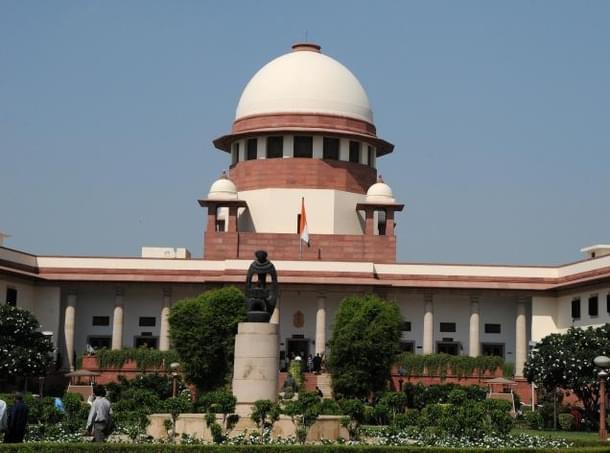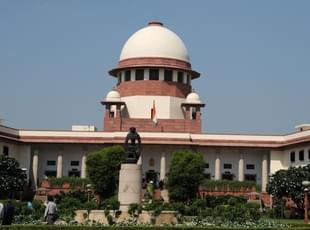Politics
The Judiciary Is Too Important To Be Left To Judges Alone
Suvrajyoti Gupta
Oct 22, 2015, 03:12 PM | Updated Feb 11, 2016, 08:50 AM IST
Save & read from anywhere!
Bookmark stories for easy access on any device or the Swarajya app.


What were the core points of contention in the NJAC hearing and how did the Supreme Court deal with them? What are to be its likely effects for the judiciary at large? Suvrajyoti Gupta explains
The speculation is over. Last week the Supreme Court of India finally stuck down the 99th Amendment to the Indian Constitution as well as the National Judicial Appointments Commission Act 2014. The amendment and the Act had brought into effect the National Judicial Appointments Commission comprising of the Chief Justice of India and two senior most judges, the Law Minister and two eminent persons appointed by the Prime Minister, Leader of Opposition and the CJI.
Justice Khehar wrote the judgment for the Court while Mr.Justices Madan Lokur, Kurian Joseph and Adarsh Kumar Goel wrote concurring judgments while Mr.Justice J. Chelameswar wrote a strong dissenting opinion. All the judges rejected the recusal request against Justice Khehar.
The entire oak forest of the judgment can be essentially reduced to an acorn of a point –namely whether the 99th amendment protects the primacy of the Judiciary in the matter of appointment. The Court held that:-
—Though the judicial component will have plurality in the judicial council it will not be the same as primacy; insertion of eminent persons (or lay persons), without necessarily any knowledge or background in law, would have a veto. The primacy of judiciary itself being the basic structure of the Constitution, the 99th amendment shall not pass its muster. (para 158, 179 of the order on merits).
—The Hon’ble Judges expressed the fear that judicial nominees and obliquely the eminent persons on the panel shall be swayed by gratitude and hence compromise on the impartiality of the judiciary.( para 164, 165). This fear of structured bargaining, spoils the system, reciprocity permeates the judgment and also features in the concurring opinion of Mr.Justice Kurian (p 909).
—More interesting was the incredible distrust shown to the political executive by the Court. It was indicated by the Court that the Executive is the progenitor of litigations besides its integrity is under question in view of matters like 2G and coal block allocation scandals (para 46 of majority opinion) and finally mention was made of Mr. Advani’s comments on the country being in danger of emergency.
Mr. Justice J. Chelameswar wrote a dissenting opinion which I can only compare to the heroic dissent of Mr.Justice H.R Khanna in the famous ADM Jabalpur Case.
He pointed out the certain glaring shortcomings of the system and real examples where it has faltered. But the crux of his dissent can be found in pg 548 wherein he stated the basic feature of the Constitution sought to be protected is not primacy of the opinion of the CJI (Collegium) but lies in the non-investiture of absolute power in the President (Executive) to choose and appoint judges of Constitutional Courts which has been protected by the amendment. He further states:
“To assume or assert that judiciary alone is concerned with the preservation of liberties and does that job well, is an assumption that is dogmatic, bereft of evidentiary basis and historically disproved” .
Mr. Justice Kurian Joseph in his concurring opinion agreed with Mr.Justice Chelameswar, that the present system lacks transparency and called for glastnost and perestroika of the system but was unclear about the exact nature of the judicial revolution.
So what can one make of it? Is this judgment a bulwark against encroachment on separation of powers by the political executive or a rather transparent effort by the judiciary to protect its power?
I would merely indicate the following facts:-
First, in all the Judges cases ( SP Gupta, Supreme Court Advocates on Record Association or the present case Supreme Court Advocates on Record Association ) the petitioners have been either senior lawyers or Bar Associations. From a legal realist point of view, all the Judges cases can be seen as a conversation between the Bar (more specially lawyers practicing before the Supreme Court and the High Courts) and the Bench, to the exclusion of the wider society and limited involvement of the political elite.
Doubtless, many civil society organizations may have filed affidavits before the Court but the judgment leaves no room for any concern that might have been expressed by them. In the UK and US on the other hand, it is a point of principle that lay persons would constitute a significant presence in the Judicial Appointment Commission. This is because outsiders bring inputs and competencies in selection that members of the legal profession do not necessarily possess. These eminent persons/lay persons in UK are mostly legal academics and public men who are not inferior to any practicing lawyer in the ways of the world. The wider society does have a distinct, undeniable stake in judicial appointments; it cannot become a closed boys club.
Second, the contempt of the political class and the concern of “favor exchange” entering the appointments process seem exaggerated. In a way the politicians and the judges are often ex-colleagues and personal friends and share the same social milieu. There are innumerable ways in which politicians could have patronized the lawyers who then become judges and patronize judges after they retire from Bench even if they had no way to participate in their appointment (membership of tribunals, appointment as arbitrators, appointment in State Commission, Governorships etc). It is not possible to ring-fence the judiciary by merely by excluding the politicians from judicial appointments. A strong institutional sense of ethics and a transparent set of conflict of interest rules can be an effective check of this favours exchange. It has worked in UK, US, Australia and it will probably work here as well.
Last but not least one must consider the question of efficiency. It is a cardinal point in management science that the expert and the human resource function of a large organization are necessarily separate. Unfortunately in case of the Collegium, the senior Judges are necessarily diverting the time from their judicial duties to apply themselves to the task of selecting judges, which is a human resource function requiring distinct skills. Is this necessarily an efficient way to fill the vacancies in the High Courts and Supreme Court or dispose of the mounting load of pending cases? This issue was not discussed in the case at all.
However, the 245th Law Commission Report did consider the question of assessment of delays, judge strengths and pendency. It suggested a plethora of methods to determine the true extent of delays, methods to determine judge strength and more importantly suggested a massive recruitment drive in the higher judiciary. I am at a loss to understand how an ad-hoc, non-professional body like the Collegium can undertake such a massive recruitment drive.
More importantly, such increase in judicial manpower will require infusion of funds. I fail to see why the State would commit major funds when it has no vote in the persons being appointed.
This decision has shown the higher judiciary in a negative light- as an institution reluctant to change, accommodate or visualize the bigger picture. The only silver lining that I see is the Supreme Court’s decision to relook at the Collegium system.
However I am unclear as rest of the legal fraternity about the scope and extent of the review. I can hope, like the rest of our billion countrymen, that such a review shall be comprehensive and holistic- the judiciary after all is too important to be left to the judges.
Suvrajyoti Gupta is an Assistant Professor of Law at the OP Jindal Global University.





